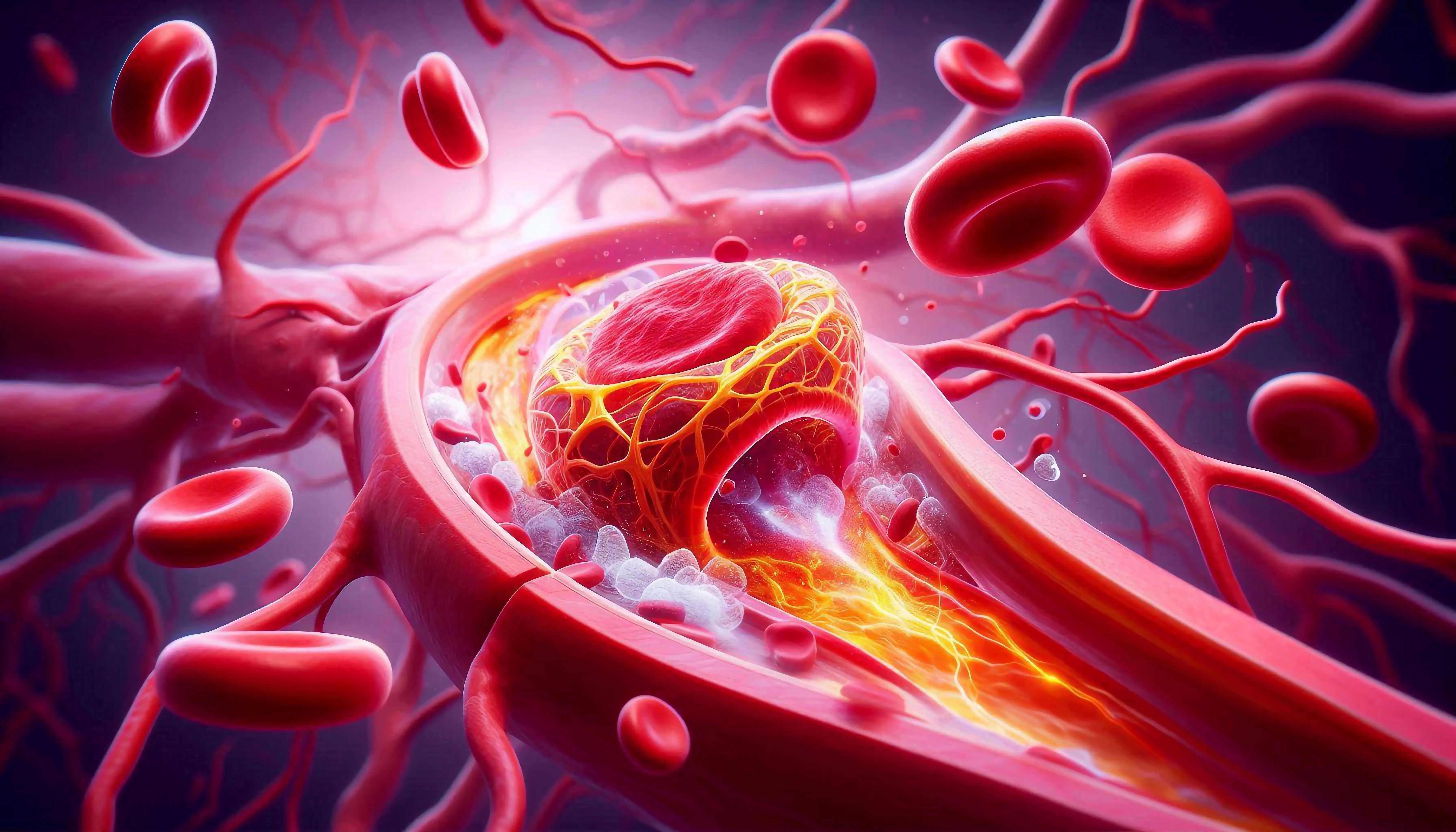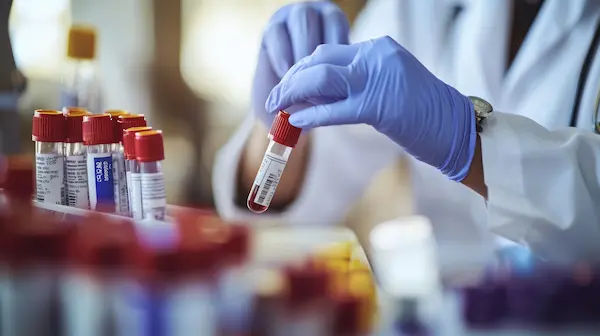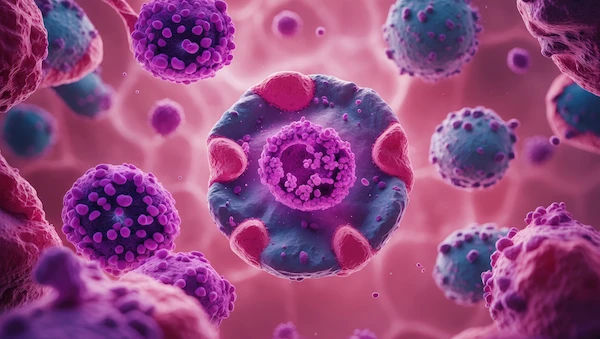Guide to Blood Cancer: Symptoms, Causes, and Key Facts
Learn about blood cancer, including its symptoms, causes, types, diagnosis, and treatment options, to stay informed and take proactive steps for your health.


Introduction
Blood cancer is a term that strikes a chord of concern, and for good reason. It represents a group of diseases that affect the production and function of your blood cells, essentially disrupting your body's most vital transportation and defense system. But what exactly triggers this disruption, and how does it manifest in the body? Most blood cancers originate in the bone marrow, the soft, spongy tissue inside your bones where blood cells are born. This article will demystify blood cancer, breaking down its root causes, the wide array of symptoms it can produce, and the key facts you need to know. Understanding these fundamentals is the first step toward awareness, early detection, and navigating the path to effective treatment.
What Exactly is Blood Cancer?
Blood cancer occurs when something goes wrong in the process of making blood cells, leading to the production of abnormal, dysfunctional cells that overcrowd the healthy ones. This disrupts the blood's critical jobs: fighting infections, carrying oxygen, and controlling bleeding.
The Blood Factory: Understanding Bone Marrow and Blood Cells
Think of your bone marrow as a highly sophisticated factory. Its primary product is blood cells, which come in three types:
Red blood cells (RBCs): Carry oxygen from your lungs to the rest of your body.
White blood cells (WBCs): Are the soldiers of your immune system, fighting infections.
Platelets: Form clots to stop bleeding.
In a healthy body, this factory produces these cells in a controlled, orderly way.
When Production Goes Wrong: The Origin of Cancerous Cells
Blood cancer begins with a genetic mutation in the DNA of a single blood cell. This error causes the cell to grow and divide uncontrollably. These cancerous cells don't function properly; they don't fight infection, carry oxygen, or form clots. Worse, they accumulate, crowding out the healthy blood cells in the bone marrow and bloodstream, which directly leads to the symptoms patients experience.
Consult a Hematologist or Oncologist for the best advice
The Three Main Types of Blood Cancer
While all blood cancers affect blood-forming tissue, they are categorised based on the type of cell affected and how quickly they progress.
Leukaemia: The Rapid Onset Blood Cancer
Leukaemia is characterised by the rapid production of abnormal white blood cells. These faulty cells are unable to fight infection and impair the bone marrow's ability to produce red blood cells and platelets. It's often acute (fast-growing) or chronic (slow-growing). A common symptom of leukaemia is persistent fatigue due to anaemia (low RBCs).
Lymphoma: The Cancer of the Immune System
Lymphoma affects the lymphatic system, a network of vessels and glands that helps fight infection. It causes lymphocytes (a type of white blood cell) to become malignant and multiply, collecting in lymph nodes and other tissues. The most telltale sign of lymphoma is a painless swelling of lymph nodes in the neck, armpit, or groin.
Multiple Myeloma: The Plasma Cell Cancer
This cancer targets plasma cells, which are white blood cells that produce antibodies. Myeloma causes cancerous plasma cells to accumulate in the bone marrow, where they crowd out healthy cells and produce abnormal antibodies that can cause kidney damage and other problems. Bone pain, especially in the back or ribs, is a hallmark symptom of multiple myeloma.
What Leads to Blood Cancer? Unpacking the Causes and Risk Factors
The exact cause of the initial DNA mutation is often unknown, but research has identified several key risk factors.
Genetic Factors and Family History
While most blood cancers are not directly inherited, a genetic predisposition can play a role. Having a close relative with leukaemia or lymphoma slightly increases your risk. Certain genetic syndromes, like Down syndrome, are also associated with a higher risk of leukaemia.
Environmental and Lifestyle Triggers
Prolonged exposure to high levels of radiation or certain chemicals (like benzene, found in gasoline and used in the chemical industry) is a known risk factor. Previous cancer treatment with chemotherapy or radiation can also, in rare cases, lead to a secondary blood cancer later in life.
Previous Medical Treatments and Conditions
A history of certain blood disorders, known as pre-leukaemic conditions like myelodysplastic syndromes, can evolve into leukaemia. Furthermore, having a compromised immune system, due to organ transplant medications or viruses like HIV, increases the risk of developing lymphoma.
Recognising the Signs: Common Blood Cancer Symptoms
Symptoms can be vague and easily mistaken for less serious illnesses. However, their persistence is a key clue.
General Symptoms: Fatigue, Fever, and Weight Loss
Unexplained and persistent fatigue that doesn't improve with rest is one of the most common signs. This is often coupled with fever, chills, and night sweats, which are signs your body is fighting an infection it can't control. Unintentional weight loss is another red flag.
Symptoms Linked to Low Blood Counts
Anaemia (Low RBCs): Causes pale skin, profound tiredness, shortness of breath, and dizziness.
Thrombocytopenia (Low Platelets): Leads to easy bruising, frequent nosebleeds, and bleeding gums.
Neutropenia (Low Healthy WBCs): Results in frequent or severe infections.
Lymph-Specific Symptoms: Swollen Nodes and Night Sweats
As mentioned, painless swelling of lymph nodes is classic for lymphoma. Drenching night sweats that soak your bedding are another significant symptom that should not be ignored.
How is Blood Cancer Diagnosed?
If blood cancer is suspected based on symptoms, a doctor will recommend a series of tests.
The First Step: Blood Tests and What They Reveal
A complete blood count (CBC) is the most crucial initial test. It measures the levels of different blood cells. Abnormal counts—like very high white blood cells or very low red blood cells—can be a strong indicator. Apollo24|7 offers a convenient home collection for tests like CBC, making initial screening more accessible.
The Gold Standard: Bone Marrow Biopsy and Aspiration
This is the definitive test for diagnosing many blood cancers. A doctor uses a needle to withdraw a small sample of liquid bone marrow (aspiration) and a tiny piece of bone (biopsy) from the hip bone. This sample is analysed for cancerous cells.
Imaging and Advanced Genetic Tests
CT, PET, or MRI scans can help detect enlarged lymph nodes or organs affected by lymphoma or myeloma. Genetic tests on the cancerous cells themselves are now standard to identify specific mutations, which helps guide targeted treatment.
Get Your Health Assessed
Modern Treatment Pathways for Blood Cancers
Treatment has evolved dramatically and is highly personalised based on the type and stage of cancer.
Chemotherapy and Radiation Therapy
Chemotherapy uses powerful drugs to kill fast-growing cancer cells throughout the body. Radiation therapy uses high-energy beams to target and kill cancer cells in a specific area. These are often used in combination.
Targeted Therapy and Immunotherapy
These are newer, more precise treatments. Targeted therapy drugs specifically attack cancer cells by targeting the proteins that control how they grow. Immunotherapy boosts your own immune system to better recognise and destroy cancer cells.
Stem Cell Transplant: Rebuilding the Blood Factory
After high-dose chemo or radiation destroys the diseased bone marrow, a patient receives an infusion of healthy blood-forming stem cells from a donor (allogeneic) or from themselves (autologous). These cells migrate to the bone marrow and begin producing healthy blood cells, essentially resetting the body's "blood factory."
Conclusion
Understanding blood cancer—from its biological origins in the bone marrow to the wide spectrum of symptoms it can cause—empowers you to be proactive about your health. While the thought of a cancer diagnosis is daunting, modern medicine has made incredible strides in treating these diseases. Many blood cancers are now managed as chronic conditions or even cured. The most important step is to listen to your body. If you experience a cluster of persistent, unexplained symptoms, don't hesitate to seek medical advice. If symptoms like persistent fatigue, fever, or easy bruising last beyond two weeks, consult a doctor online with Apollo24|7 for further evaluation. Early and accurate diagnosis is the cornerstone of effective treatment and a positive prognosis.
Consult a Hematologist or Oncologist for the best advice
Consult a Hematologist or Oncologist for the best advice

Dr Minakshi Bansal
Paediatric Haematologist
8 Years • MBBS, MD PEDIATRICS, FIAP (PHO)
Delhi
Apollo Hospitals Indraprastha, Delhi
(25+ Patients)

Dr Prasanna Rammohan
Oncologist
18 Years • MBBS,MD,DM(Oncology),ECMO,FCPM
Tiruchirappalli
Apollo Speciality Hospitals Old Palpannai, Tiruchirappalli

Dr. Priyanka Chauhan
Haemato Oncologist
7 Years • MBBS, MD, PDCC (Hemato-oncology), Post-Doctoral Fellow in Bone Marrow Transplant
Lucknow
Apollomedics Super Speciality Hospital, Lucknow
(50+ Patients)

Dr. Prashant Chandra Das
Surgical Oncologist
15 Years • MBBS (MKCG Medical college) MCh (Surgical Oncology, Kidwai memorial institute of Oncology, Bangalore) MS (General Surgery, BHU Varanasi) Fellowship in Minimal Access Surgery ( FMAS). ESSO Course On Minimally Invasive Esophagectomy & Gastrectomy (UMC, Utrecht, Netherlands). Trained in Robotic and Laparoscopic Cancer Surgery.
Bhubaneswar
Apollo Hospitals Old Sainik School Road, Bhubaneswar
(25+ Patients)

Dr. Sushith C
General Physician
2 Years • MBBS
Bengaluru
PRESTIGE SHANTHINIKETAN - SOCIETY CLINIC, Bengaluru

.webp)



